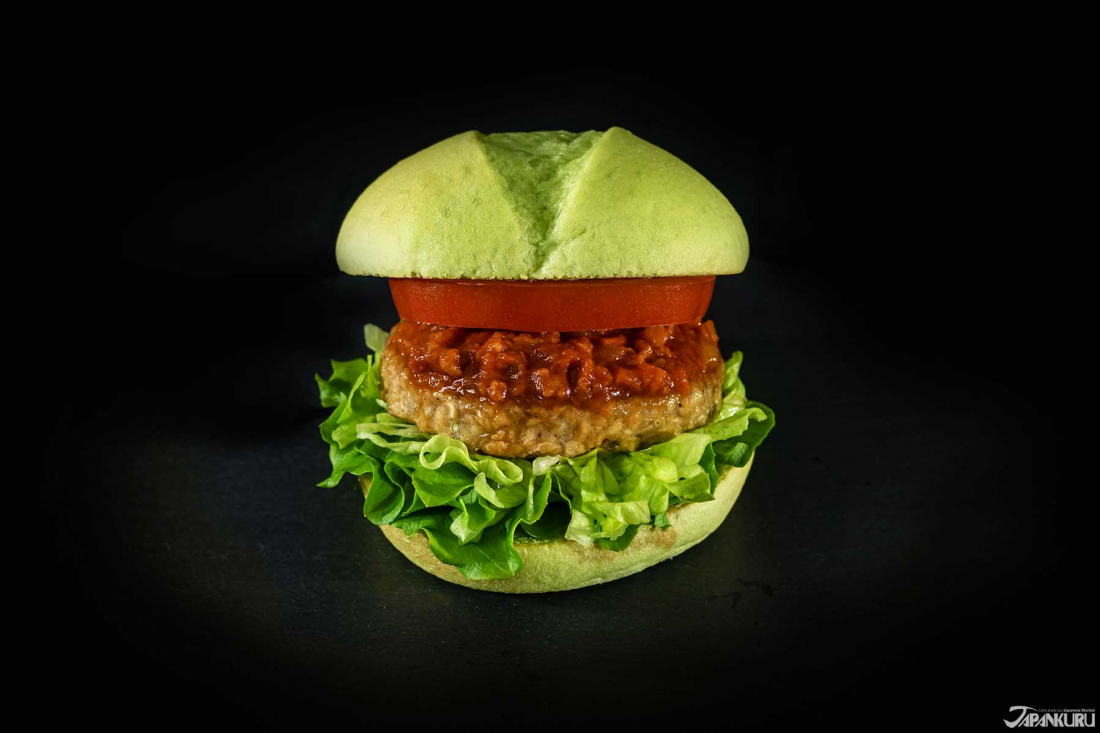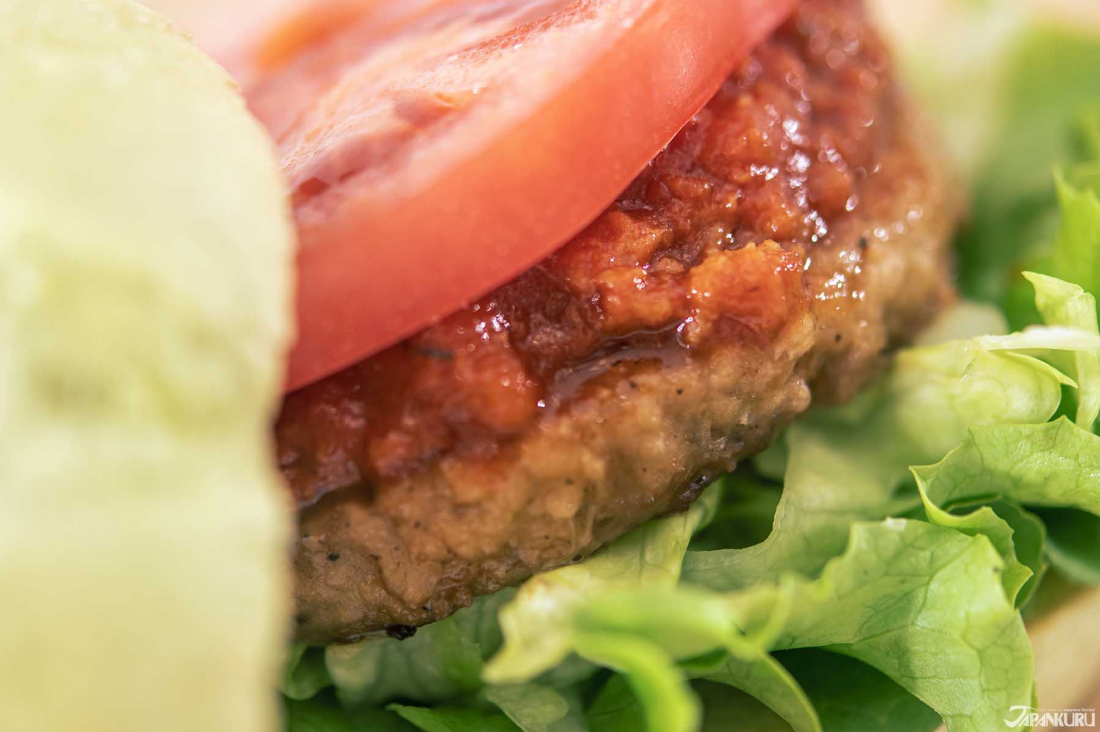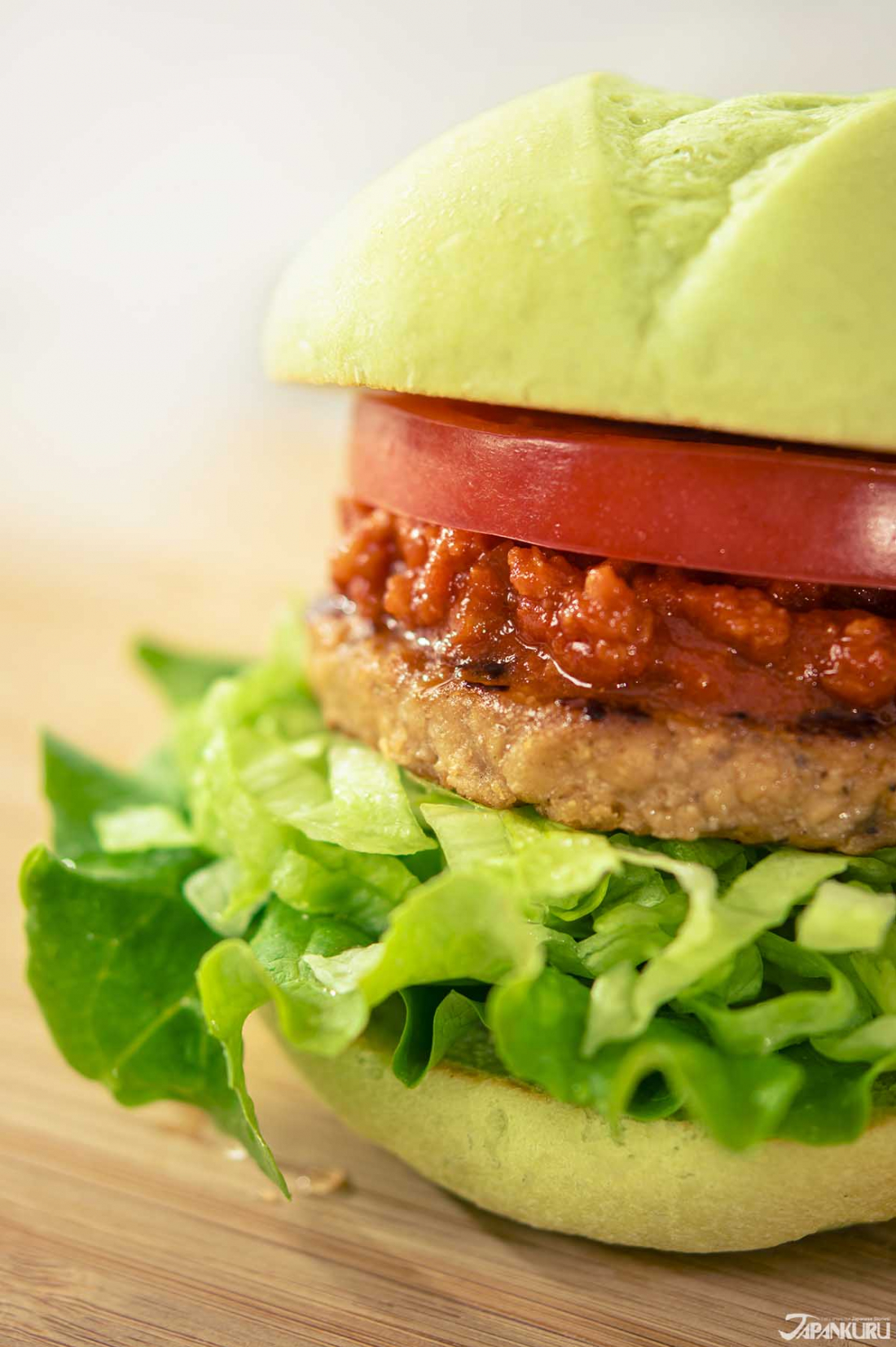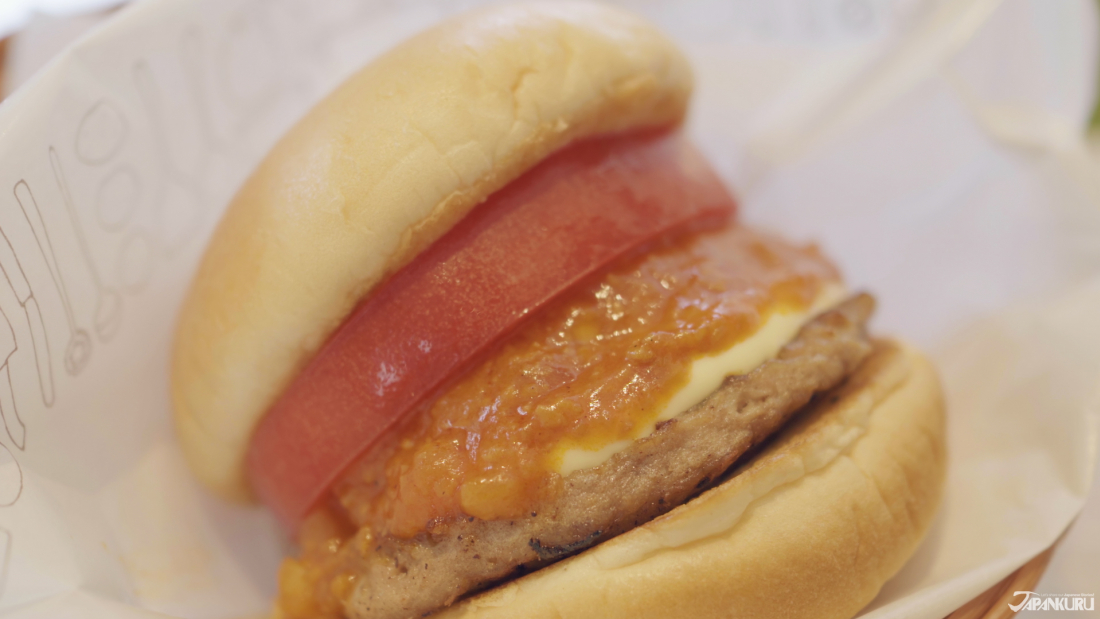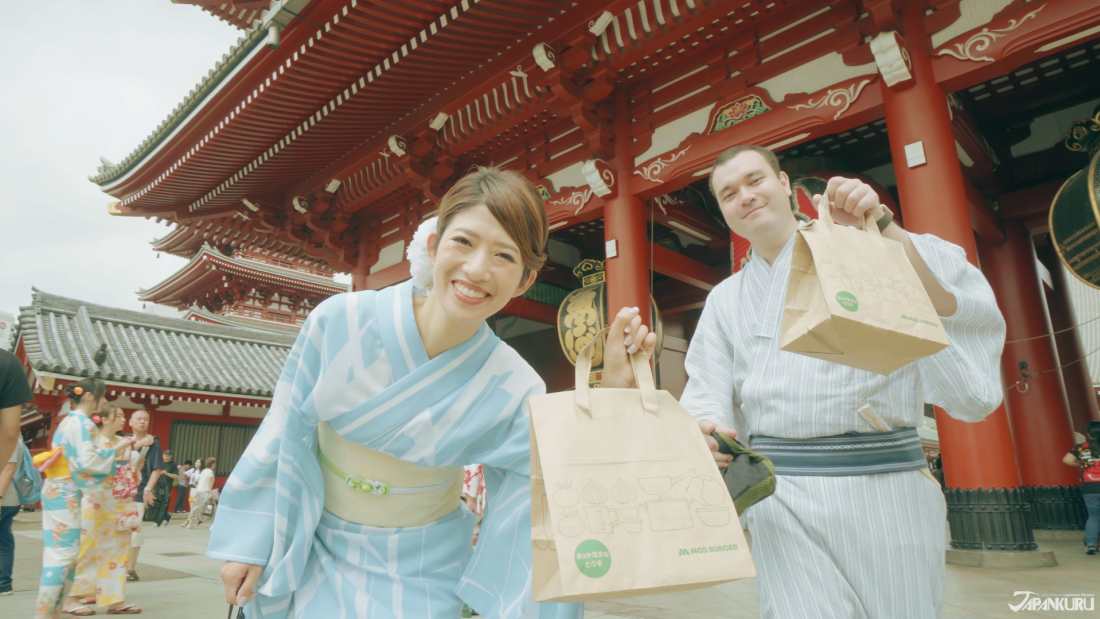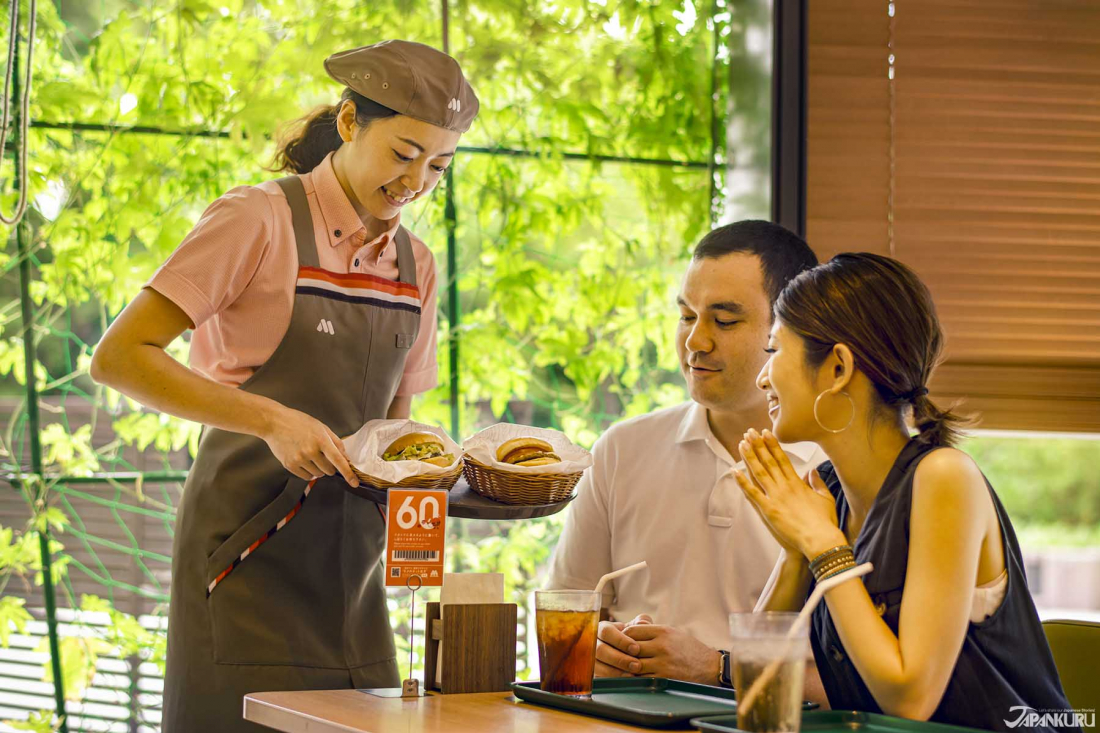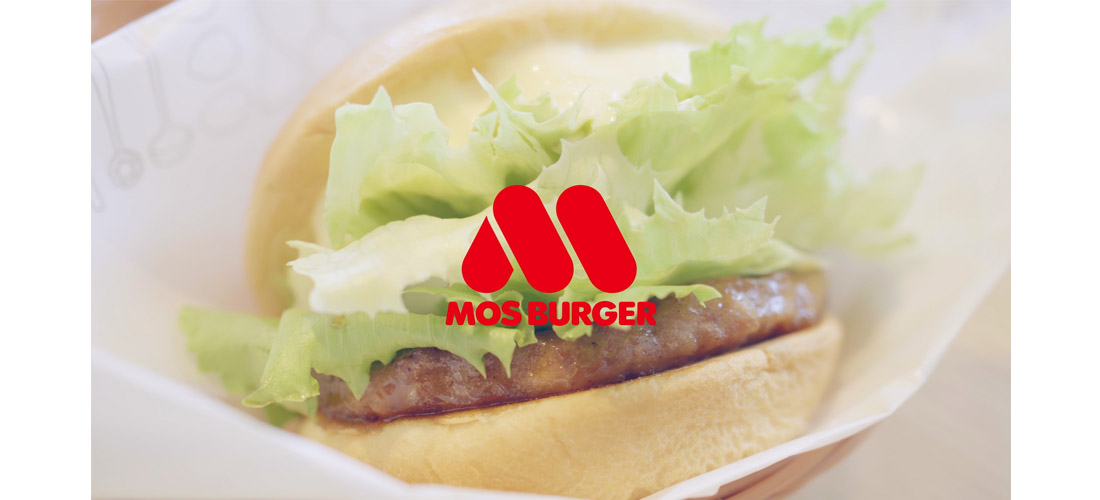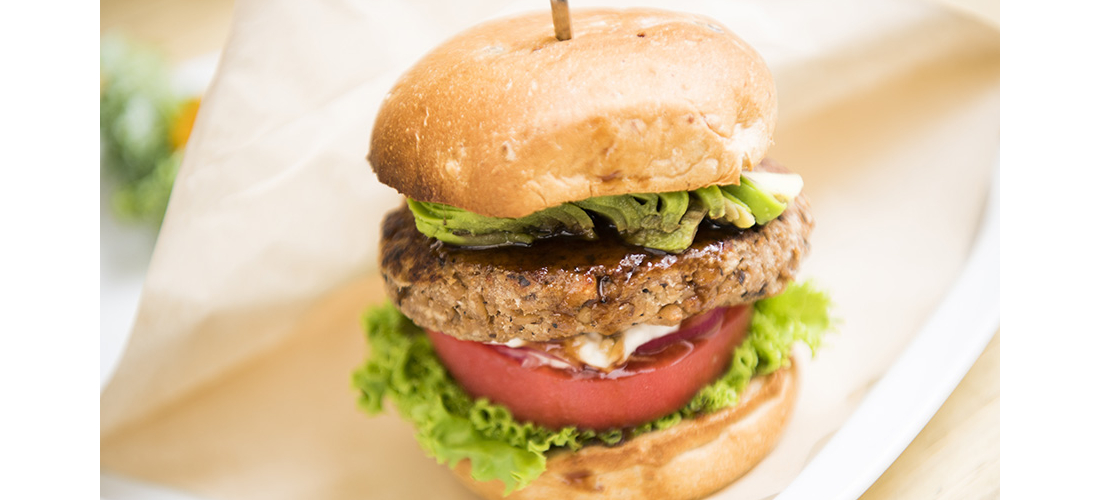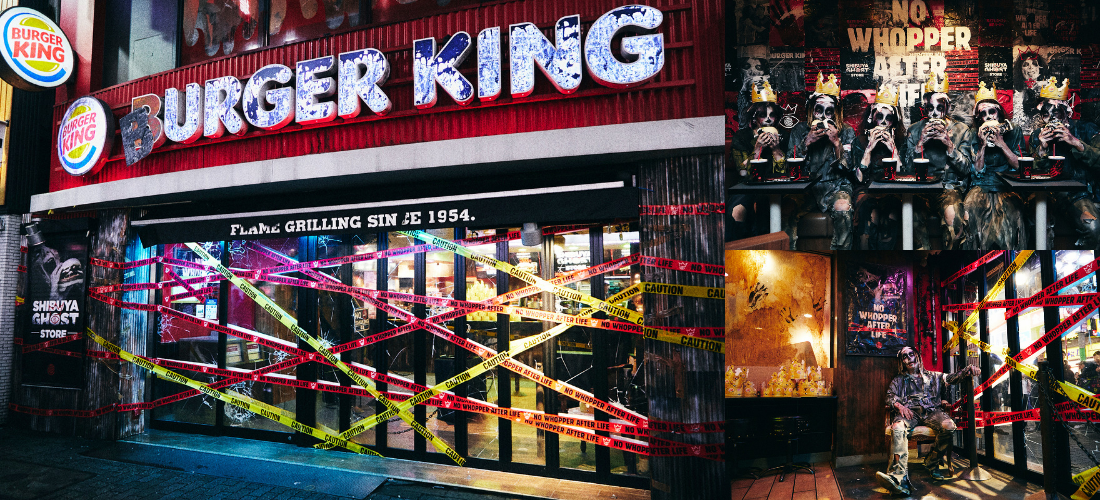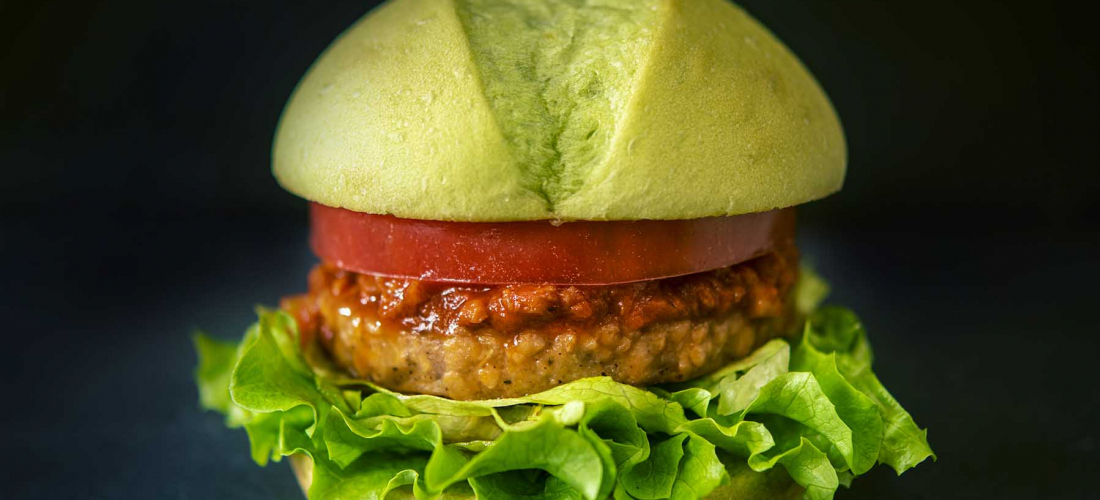
CONTENTS
The Green Burger is the newest big thing from Japanese hamburger chain Mos Burger, and it’s likely to win the hearts of anybody who likes a good bite to eat! Which is why the JAPANKURU team had to find out more about this plant-based burger!
The Green Burger’s History
Mos Burger was founded in 1972, with dreams of making food that everyone can enjoy, and using good, natural ingredients while they were at it (as you can tell from the MOS, which stands for Mountains Ocean Sun). Due in part to their popularity, in recent years the Japanese burger joint has been compared to other enormous, multinational fast-food chains. When asked, though, Mos Burger rebels against this comparison. Their intentions aren't just to make food that is fast and cheap, they say, but to make good food, for any customer who walks in the door.
Which is where their newest offering, the Green Burger, comes into play. Every burger made at a Mos Burger shows off the results of using high-quality ingredients, but the latest in food technology opened up a new world of options to look into. With new innovation, 2020 became the perfect time to make the fresh, new Green Burger: delicious, plant-based ingredients, all in one convenient Mos Burger package.
Plus, since Mos Burger has been implementing sustainable methods and working towards green policies since the start, the UN's more recent 17 Sustainable Development Goals (SDGs) were right up their alley. Their newest product, it would seem, is here to tackle goals #3 (good health and well-being), and #12 (responsible consumption and production). They say these green ingredients are good for the body, and good for the world! We really wanted to learn a little more about the burger itself.
So, What Is the Green Burger?
With this new product on the market, bound to draw eaters of all kinds, including lots of international travelers, the JAPANKURU team knew we had to try some for ourselves, so we got on it asap. The Green Burger is made without any meat or dairy, but according to Mos Burger, the whole point was not to make a vegetarian burger, but to make a burger that anyone, and everyone, can enjoy together! So how is it really?
To start: the base of the Green Burger is a plant-based patty from Mos Burger, designed from the start to be different. No meaty additives, all plants. The patty’s combination of soy bean, Japanese konjac root, and cabbage make for a new take on some classic ingredients, plus some intriguing additions. And this soy-based patty makes no misguided claims at tasting just like meat, but instead has its own satisfyingly savory, umami-filled flavor. Soy patties have been floating around the veggie burger scene for years, and even Mos Burger has already been offering them on their menu, but this plant-based patty makes use of a brand new formula. The Green Burger patty is mildly flavorful, with a gratifying texture that meat-eating members of the JAPANKURU team found appealing, but vegetarian tasters still didn't find off-putting. It doesn't taste like fake meat, it just tastes good!
Surrounding the patty is a bed of crunchy, fresh lettuce, but right on top is the all-important Green Burger sauce. Mos Burger is known for delicious sauces on their burgers (and also known for generous sauce portions!), so we heard that nailing the sauce was an important hurdle that the company had to overcome before releasing the burger to the public. And to make it even harder on themselves, Mos Burger decided the Green Burger (sauce included) needed to be made without "The Five Pungent Roots", called the Gokun (五葷) in Japanese.
The Gokun are onions, garlic, scallions, chives, and leeks, and they’re avoided by people who believe in certain philosophies. Mos Burger wanted to make the Green Burger available to everyone, but of course leaving out garlic and onion (such important flavors in so much vegetarian cooking), made keeping things flavorful a little more difficult. Somehow, though, we think they pulled it off. A hearty tomato sauce with flavorful additions like traditional Japanese gobo (ごぼう, a vegetable also called "burdock root" in English), it adds an important contrast to the simple soy patty.
Of course, the moment you see (or even hear about) the green burger, you have to be curious about what makes it green! Sure, there's the symbolism of "green," using eco-friendly ingredients and processes, but the burger's bun is actually green, as well. In person, it’s a pleasant, pale shade of green, and that’s because the color comes from… (drum roll please)… spinach! Nothing scary about that. It doesn't add too much spinach flavor, just a nice leafy green tint to a simple wheat bun!
Having judged each of the individual sections of the new Green Burger and deemed each of them, well, pretty good, would we order one again? Would the vegetarians in our group want one? Would the meat-eaters bother to go for the soy patty instead of the standard, meaty, reliable Mos Burger?
Unanimously: yes! While each of us have our own Mos Burger favorites, preferences honed by quite a few trips to the burger joint while living in Japan, we all thought the Green Burger was a pretty good choice for anyone, dietary restrictions or no. Ordering a Green Burger definitely isn't sacrificing flavor for peace of mind – it's just another solid option from trusty old Mos Burger. A brand new addition to their menu of tasty burgers!
Heading to Mos Burger
Our Other Favorites
Getting There
Now there's nothing to do but to head over! Fortunately, Mos Burger has more than 1,300 stores across Japan, with quite a few strategically placed conveniently close to popular sightseeing destinations. Hop on google maps and you're likely to find one nearby!
PROFILE
Follow us @Japankuru on Facebook, Instagram, and Twitter!
COMMENT
FEATURED MEDIA
VIEW MORE
Narita Airport Tax-Free Shopping List 나리타공항 면세점 쇼핑 리스트 #pr #calbee #jagapokkuru #japanesesnacks #japanesefood #japanesesouvenir #japantravel #japantrip #naritaairport #hokkaido #나리타국제공항 #나리타공항면세점 #나리타공항면세점과자 #일본공항면세점 #일본기념품쇼핑리스트추천 #공항면세점쇼핑리스트 #일본과자추천 #면세점일본과자 #일본기념품추천 #일본과자 #자가폿쿠루 #일본간식 #일본과자쇼핑 #일본면세점필수템 #일본기념품쇼핑

Asakusa's Sanja Matsuri, one of the biggest festivals in all of Tokyo, is almost here! Make sure you check out the festival route so you don't miss all the festivities this May. #asakusa #sanjafestival #sanjamatsuri #asakusashrine #sensoji #sensojitemple #japanesefestival #shintoshrine #japaneseculture #tokyo #tokyotrip #tokyotravel #asakusasightseeing #matsuri #japantrip #japantravel #springinjapan #tokyotravel #japankuru #산자마츠리 #아사쿠사 #일본마츠리 #일본여행 #일본5월

Odaiba's DiverCity Tokyo Plaza is home to the famous real-size 20m-tall Unicorn Gundam, and the popular shopping center has even more Gundam on the inside! Check out the Gundam Base Tokyo on the 7th floor for shelves upon shelves of Gunpla, and the Gundam Base Tokyo Annex on the 2nd floor for cool anime merchandise. Both shops have tons of limited-edition items! #pr #odaiba #tokyo #tokyotrip #japantrip #japantravel #PR #divercity #divercitytokyoplaza #tokyoshopping #gundam #unicorngundam #gundambasetokyo #anime #otaku #gunpla #japankuru #오다이바 #다이바시티도쿄 #오다이바건담 #건담 #일본건담 #건프라 #건담베이스도쿄

Evangelion, in miniature!? Tokyo's SMALL WORLDS Miniature Museum is actually a must-see for anime lovers, thanks to the tiny Evangelion Hangar and Tokyo-III... plus a whole universe of other scenes both real and fictional. #smallworlds #smallworldstokyo #tokyotrip #tokyotravel #evangelion #eva #anime #miniature #miniatures #animefigure #japantrip #japantravel #에반게리온 #스몰월드 #에반겔리온 #スモールワールズ #오다이바 #아리아케

Have you sat down for a snack at Sumida Aquarium yet? This aquarium next to Tokyo Skytree is known for its penguins and garden eels, but we can't get enough of their cute snacks! There are lots of good seats around the aquarium, too, so it almost feels like one big cafe. 🐧 • Find out more at Japankuru.com! (Link in bio.) • #japankuru #sumidaaquarium #skytree #tokyoskytree #solamachi #sumida #tokyo #tokyotrip #tokyotravel #aquarium #japanesesweets #themecafe #すみだ水族館 #Japan #日本 #일본 #Japon #ญี่ปุ่น #Japão #япония #japantravel #日本旅行 #日本旅遊 #japan_of_insta #japantrip #traveljapan #japan🇯🇵 #igerstokyo #explorejapan

For anime fans, the Evangelion areas at Small Worlds Miniature Museum are a must see! The tiny miniature people in the Evangelion Hangar look like ants beneath the moving Unit-01, Unit-00, and Unit-02! And over in Tokyo-III, characters like Shinji, Rei, and Katsuragi live life on a miniature scale. #odaiba #tokyo #tokyotrip #japantrip #japantravel #ariake #smallworlds #miniaturemuseum #smallworldstokyo #tokyotravel #evangelion #eva #anime #miniature #miniatures #animefigure #japankuru #스몰월드 #에반게리온 #오다이바 #오다이바관광 #오다이바스몰월드 #미니어쳐



